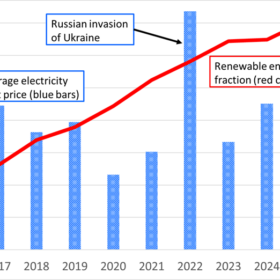The comprehensive Australian Energy Market Commission (AEMC) analysis of 1,000 New South Wales households found that while individual economics are now compelling, the rapid transformation raises important considerations for ensuring all consumers benefit as the market matures.
Strong market uptake is already evident, with around 20,000 battery installations registered in the month since the federal rebate launched, reflecting improved affordability for Australian households.
The research used real hourly customer data and examined over 70 battery products, revealing highly individualistic benefits that vary dramatically by household type and energy usage patterns.
Key findings show;
- average payback periods drop to 7.3 years with federal rebates, and as low as 4 years for NSW households participating in Virtual Power Plants
- budget batteries outperform premium brands financially, with NSW households seeing 10-year returns of $2,308 (USD 1,512) on average
- ‘evening peaker’ households and high-usage households see the fastest returns
- consistent seasonal patterns combined with informed purchasing decisions improve battery economics.
AEMC Chair, Anna Collyer, said the analysis provides crucial insights into how this technology shift is unfolding.
“We’re seeing battery economics reach a genuine sweet spot similar to the early solar boom,” Ms Collyer said.
“The battery market has grown 80% in two years, but we’re still only seeing 4.1% penetration of solar households.”
“Understanding how individual and system benefits align will be crucial as we potentially approach solar-like adoption levels.”
While the AEMC’s analysis focused on individual battery benefits, the Commission is working to ensure that as more households adopt batteries, these systems can help reduce energy costs for all customers while still rewarding battery owners and preserving their choice in how those systems operate.
Virtual power plant (VPP) participation emerged as a promising model, delivering strong individual returns while providing grid services.
The AEMC maintains its commitment to understanding how technology changes affect energy markets and consumers as Australia transitions to net zero.
This analysis provides the evidence base for considering how the broader energy system might need to adapt to maximise benefits for all Australians.






By submitting this form you agree to pv magazine using your data for the purposes of publishing your comment.
Your personal data will only be disclosed or otherwise transmitted to third parties for the purposes of spam filtering or if this is necessary for technical maintenance of the website. Any other transfer to third parties will not take place unless this is justified on the basis of applicable data protection regulations or if pv magazine is legally obliged to do so.
You may revoke this consent at any time with effect for the future, in which case your personal data will be deleted immediately. Otherwise, your data will be deleted if pv magazine has processed your request or the purpose of data storage is fulfilled.
Further information on data privacy can be found in our Data Protection Policy.